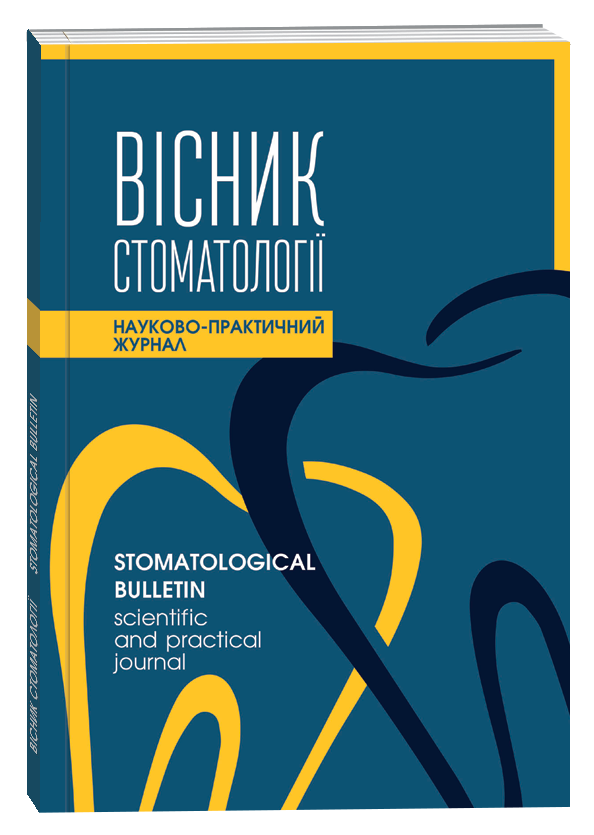ASSESSMENT OF THE STATE OF ORAL HYGIENE IN PATIENTS WITH VARYING DEGREES OF PERIODONTAL TISSUE DAMAGE
DOI:
https://doi.org/10.35220/2078-8916-2023-50-4.15Keywords:
adults, dentistry, epidemiology, oral hygiene, periodontitis.Abstract
Purpose of the work. The study is devoted to the study of the state of hard tissues of teeth in patients with varying degrees of periodontal tissue damage. Materials and methods. The study involved 63 patients aged 35-60 years with varying degrees of periodontal tissue damage who were examined at the dental clinic № 1 in Lviv. The patients were divided into different age groups: 35-39, 40-49 and 50-60 years old. To assess the state of oral hygiene, the Silness-Loe, Stallard and plaque indices were used. A statistically significant difference between alternative quantitative features with a distribution corresponding to the normal law was evaluated using the Student's t-test. The difference was considered statistically significant at p<0.01. It was observed that female patients aged 35-39 years had a higher Silness-Loe and Stallard index compared to men of the same age range, which may indicate a lower level of oral hygiene in women of this age. A similar trend was observed in the tartar index, where women had a significantly higher score than men. At the age of 50-60 years, the Silness-Loe and Stallard indices in men and women were relatively similar, but men still had slightly higher indicators. This may be due to the gradual aging of the body and a decrease in overall immune activity, which affects the condition of the oral cavity. The study emphasizes the need for an in-depth analysis of the etiological factors affecting the state of oral hygiene in people with periodontitis to improve the effectiveness of the treatment strategy. An integrated approach to analyzing the data obtained on the state of oral hygiene is critical for developing targeted treatment and prevention programs for patients with different stages of periodontal disease, taking into account the individual characteristics of each patient, such as age and gender.
References
Kassebaum N.J., Bernabé E., Dahiya M., et al. Global burden of severe periodontitis in 1990-2010: a systematic review and metaregression. J Dent Res. 2014. № 93. Р. 1045-53.
Mariotti A., Hefti A.F. Defining periodontal health. BMC Oral Health. 2015. № 15(Suppl 1). S 6.
Mariotti A. Dental plaque-induced gingival diseases. Ann Periodontol. 1999. № 4(1). Р. 7-19.
Schätzle M., Löe H., Lang N.P., Bürgen W., Ånerud Å., Boysen H. The clinical course of chronic periodontitis. IV. Gingival inflammation as a risk factor in tooth mortality. J Clin Periodontol. 2004. № 31. Р. 1122-1127.
Page R.C., Sturdivant E.C. Noninflammatory destructive periodontal disease (NDPD). Periodontol 2000. 2002. № 30. Р. 24-39.
Хоменко Л. О., Чайковський Ю. Б., Смоляр Н. І. Терапевтична стоматологія дитячого віку. – Київ: Книга плюс, 2014. 432 с.
Repetska O.M. Dynamics of protein metabolism indicators in the oral fluid after complex treatment of generalized periodontitis in young persons on the background of primary hypothyroidism. JMBS. 2022. № 7(4), 95–99 doi: 10.26693/jmbs07.04.095.








